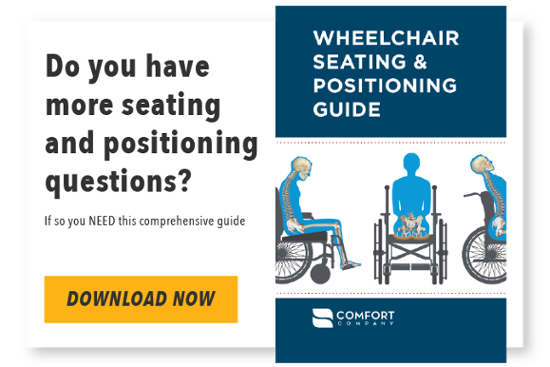Part 1 in our series about Progressive Neurological Disorders.
Can you imagine being able to walk one day, and the next day you can’t even stand up?
“You need a wheelchair,” your healthcare provider tells you. Ok, well maybe a wheelchair isn’t so bad. Then you have a full seating assessment and your therapist wants to get you a power wheelchair with all these features you don’t even understand. It all seems like too much! This is a reality many of our clients face when diagnosed with a progressive neurological disorder.
Progressive neurological disorders affect the central or peripheral nervous system. As the name implies, the condition is a PROGRESSIVE deterioration in function. Each client’s progression varies and may be gradual over years or more aggressive and occur over weeks or months. But the one constant is that it will affect the client for the rest of his/her life. As a therapist or ATP, progressive neurological disorders you may be faced with include:
-
Muscular Dystrophy
-
Multiple Sclerosis,
-
ALS
-
Parkinson’s Disease
-
Spinal Muscular Atrophy (SMA).
Providing seating for someone with a progressive neurological disorder can be tricky because symptoms and issues change with time.
An individual may experience the following changes:
-
Decline in overall medical health
-
Decrease in physical strength
-
Decline in cognition
-
Decline in overall function
Since the rate of progression is unpredictable and varies from months to decades, providing a seating system is a challenge and it is imperative to THINK AHEAD as the therapist or ATP.
Our job as the therapist or ATP should be to help clients:
-
Understand the disease process
-
Understand the impact it will have on their lives and families
-
Understand the importance of a chair base and seating components that will address their CHANGING condition, not just their status at the time of evaluation
We as providers need to think ahead and provide our clients equipment that will change with them to provide the independence, support, and skin protection they need when they no longer can move on their own.
In my next blog I’ll introduce what you need to consider as a therapist or ATP when making choices for a seating system, to provide maximum independence and function for your client with a progressive neurological disorder, stay tuned!

Stacey Mullis, OTR/ATP
Director of Clinical Marketing
Stacey is Director of Clinical Marketing. She graduated from Western University in London, Ontario, Canada with a BA Linguistics and BSc Occupational Therapy and has practiced as an OTR for over 20 years. With experience in pediatrics, inpatient/outpatient rehabilitation, long term care, and home health, Stacey has faced the challenges first hand of providing appropriate seating in various clinical settings. This led her to pursue an apprenticeship at Care Partners Seating Clinic in Asheville, NC to advance her skills, and she obtained her ATP certification in 2012. Mullis is a member of the NCOTA, CTF, NRRTs, RESNA, and AOTA.

